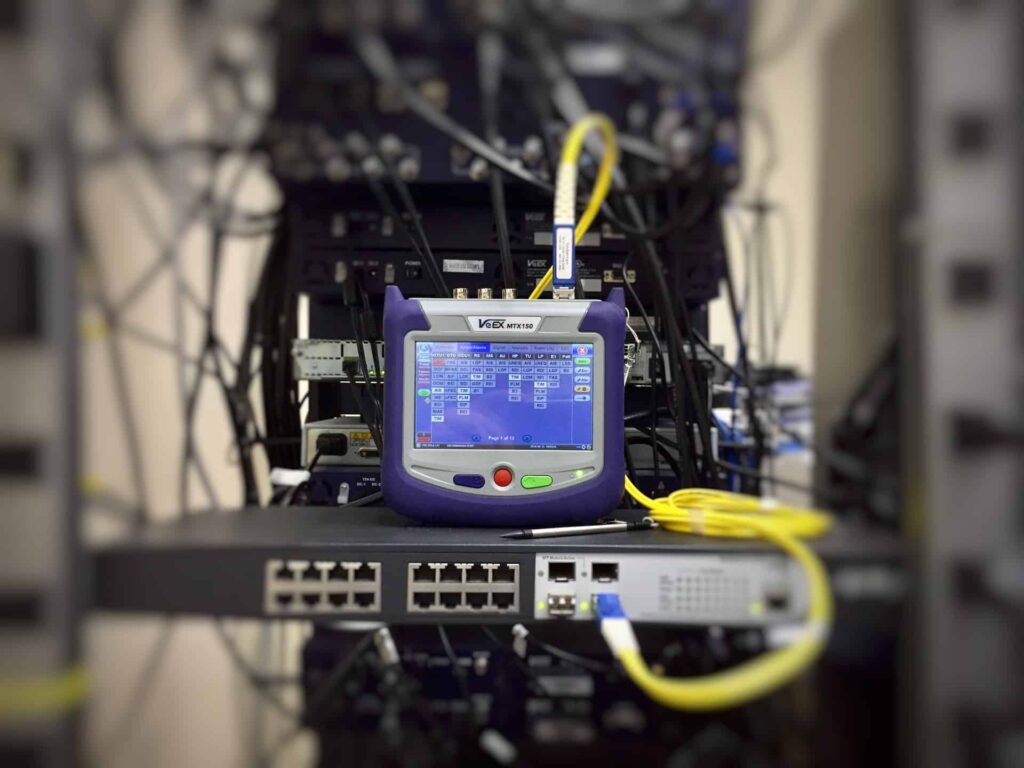Over the past two decades, servers have become more powerful, and data center designers have a better ability to maximize the number of servers in a data center.
A few of the biggest technology companies globally are Google, IBM, Amazon, Netflix, Uber, and Facebook. They have developed technologies that billions of people use word wide. They have even made technology part of our daily routines.
Hyperscale companies have grown since the 2000s because the demand for data has also increased. But how do these technologies work? How can they maintain the speed and reliability required by life in the 21st century?
What is a Hyperscale Data Center?
A hyperscale data center has a dedicated building that houses an organization’s IT equipment and servers. The center can draw on its data resources to operate its business to the public as a service. A hyperscale data center allows digital programs to transfer and save data more efficiently. It’s about fitting more IT equipment in less space.
Hyperscale data centers are often associated with big data-producing companies like Facebook, Microsoft, Google, Amazon, and IBM. They have enormous business-critical facilities designed to support robust, scalable applications correctly.
Not to be compared to enterprise data centers, which are significantly smaller than a hyperscale company. Something that differentiates a hyperscale data center from an enterprise data center is the volume of storage, compute, and data services they process.
In a survey conducted in 2014, 93% of hyperscale companies expect to have 40(Gbps). In the same study, 51% said that the bandwidth needed to manage vast volumes of data is becoming an increasing challenge.
Related: Data Centers: What They Do & Why
Data Centers: Enterprise vs. Hyperscale
At the core of most businesses is a data center that houses computer systems and related components, like storage systems and telecoms. Redundancies are common in these environments if power, environmental aspects, or security systems go down. The size of your business and your computing power determine how large or how many data centers are required; however, a single data center for a large enterprise typically utilizes the same amount of electricity as a small town. And such an enterprise might need a couple of these data centers.
Maintaining a data center is no small task. You are constantly handling the environment to ensure consistent device performance, developing a patching schedule that enables constant repairs and reduces downtime, and hurrying to fix inevitable failures.
Compare an average-sized business with companies like Google or IBM. While there isn’t a single, extensive meaning for HDCs, at a basic level, they are substantially bigger than a typical enterprise data center. Market intelligence firm International Data Corporation specifies a data center as “hyperscale” when it exceeds 5,000 servers and 10,000 square feet. Of course, that’s only a minimum requirement; some hyperscale data centers are home to thousands of servers, even millions.
However, IDC states there is more that sets these facilities apart. For example, hyperscale data centers require an architecture enabling a homogenous scale-out of greenfield applications: projects with no constraints. In addition, these enormous facilities are increasingly disaggregated, higher-density, and power-optimized.
Hyperscale businesses that rely on these data centers likewise have hyperscale requirements. While most enterprise companies can depend on out-of-the-box infrastructures from tech suppliers, hyperscale companies should individualize almost every aspect of their computing environment. That means building particular abilities at massive scales, controlling every aspect of the computing experience, and manipulating every configuration. No one can do it much better at a scale this size than the company can do for itself. The real expense of these demands limits who can join the hyperscale club.
The expense might be a barrier to entry for a business that wants to run a hyperscale data center. However, it isn’t the problem. Automation is.
Businesses that run hyper data centers focus on automating, or “self-healing,” a term that describes an environment where inescapable breaks and hold-ups happen. Still, the system is so regulated and automated that it will fix itself. This self-healing automation is crucial because it encourages substantial effectiveness from the data.
What Does It Mean To Hyperscale?
Hyperscale is a term that refers to a computing system’s capability to scale to meet tremendous demand at orders of magnitude.
Scaling some part of a computer means increasing computing power, networking infrastructure, storage resources, or memory.
The goal of scaling is to build a robust system. That means that the system revolves around:
- The cloud
- Big data
- The distributed storage
- Or a combination of all three.
Hyperscale is not only the ability to scale but also the ability to scale rapidly and big.
Scaling “up” is typically seen as a vertical approach to architecture, often adding more power to the existing machines. However, another way to increase capacity is by “scaling out,” a horizontal process, like adding more devices to your computing environment.
In general, companies deal with hyper-scaling in three arenas:
- The financial power and revenue sources.
- In the physical infrastructure that supports data centers.
- In the ability to scale computing tasks.
Hyperscale data centers are incredible at adapting. They can scale down, up, and out to meet demands. Doing so by adding more computing power, adding more machines, or scaling to the edge of a network.
How Hyperscale Works
First, to effectively run a hyperscale data center, a few basic foundations need to be established. All hyperscale data centers should meet these requirements because they are necessary for proper operation.
Space and Protection
Space is a crucial aspect of the data center world. Every piece is designed to optimize and minimized the risk of falling victim to malicious attacks.
Since hyperscale centers hold tons of delicate personal and financial information that the owners are liable to keep under protection, it’s vital to protect the premises and keep them clear of potential thieves.
High-density server racks
Well-designed server racks are essential for a functioning hyperscale center. Many data centers have their racks custom-made to fit the hardware they plan on using efficiently.
To optimize how space is being used, data centers need to build as high up as possible. It’s crucial to push the boundaries of rack mounting height to use available space efficiently.
Looking for superior power, cooling, or racking infrastructure for your data center? Contact C&C to get in touch with our experts today!
Power Consumption
In 2019, A data center in Northern Virginia was the first to reach 1 gigawatt of capacity, which could power 700,000 homes if electricity was being consumed at a constant rate. This means that a single data center could use the amount of power to light a whole city.
This enormous amount of power consumption drives faculties to build in areas where it is easier to get sustainable and cheap sources of electricity.
However, energy has become more efficient within the past years, so power consumption in data centers is growing less quickly.
Related: Data Center Power Design: AVOID THESE MISTAKES
High Cooling Power
Data centers are like the engines of the internet. With people from different countries logging in to serve, that action requires many complex systems to keep the system efficient and cool. Organizations like Google change their cooling technologies to keep the system operating correctly.
Most advanced data centers have heating, ventilation, and air conditioning services that direct cold air from under the floor into cooling compartments and hot exhaust air out of the hot rooms. The hot air is cooled and recycled. This process takes up space, and it can be hard to fit everything and make it work.
If you need help cooling your data center, we offer custom cooling service advisory that will fit your space, equipment, and budget.
Related: Data Center Cooling 101: From Start To Finish
What Companies Should Opt For Hyperscale?
If a company is built around a vast data-driven ecosystem, it might need to elaborate its own hyperscale data center. Most of the largest hyper-scale data centers are run by companies like Google, Microsoft, Yahoo, Facebook, Apple, and Google. However, if your company is small, you can still take advantage of hyper-scale innovations because you can use your servers through independent operators.
Hyperscale Data Centers & The Future
With billions of individuals and 10s of billions of software online today, there’s never been a more prominent need for infrastructure and data centers. So what’s leading the way for companies to scale operations much faster than ever before? Hyperscale data centers.
Hyperscale companies continue to control the landscape, driving style, location, and expense for the entire industry. Though the particular companies may change, the underlying trends of digitization, IoT, and information development will sustain the requirement and continue for even more data centers. And a significant portion of these will be hyperscale.
Final Thoughts
As the demand grows, more hyper-scale companies are putting greater emphasis on efficiency to meet customer demands. Security, cooling, power, and high-density racks on any data center are critical components to protect the organization’s data and networks.
Are you looking to optimize your data center? Contact C&C today.
Last Updated on January 27, 2023 by Josh Mahan


![Best data center racks Best data center racks [buyer’s guide]](https://cc-techgroup.com/wp-content/uploads/2021/08/best-data-center-racks-1024x576.jpg)

